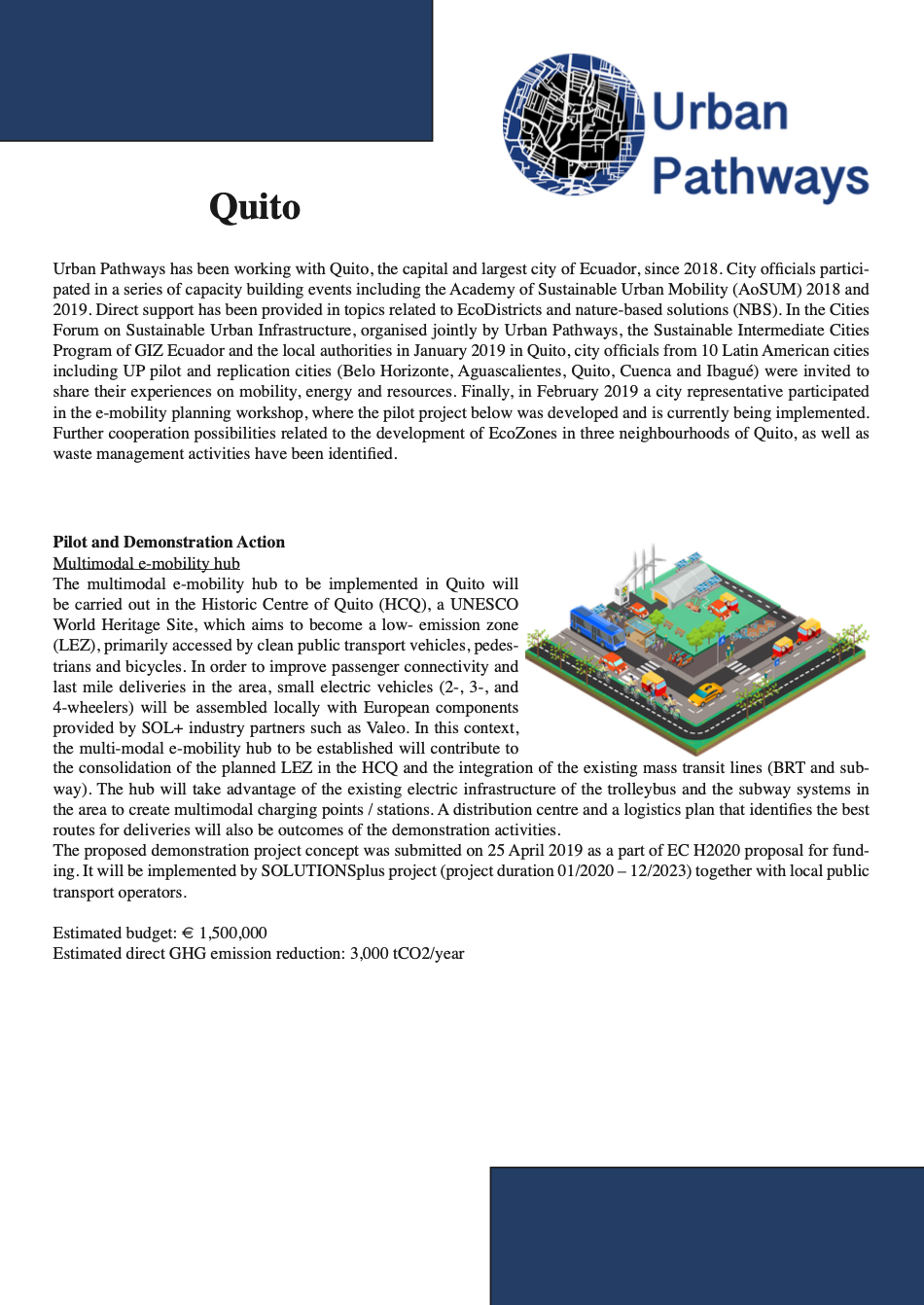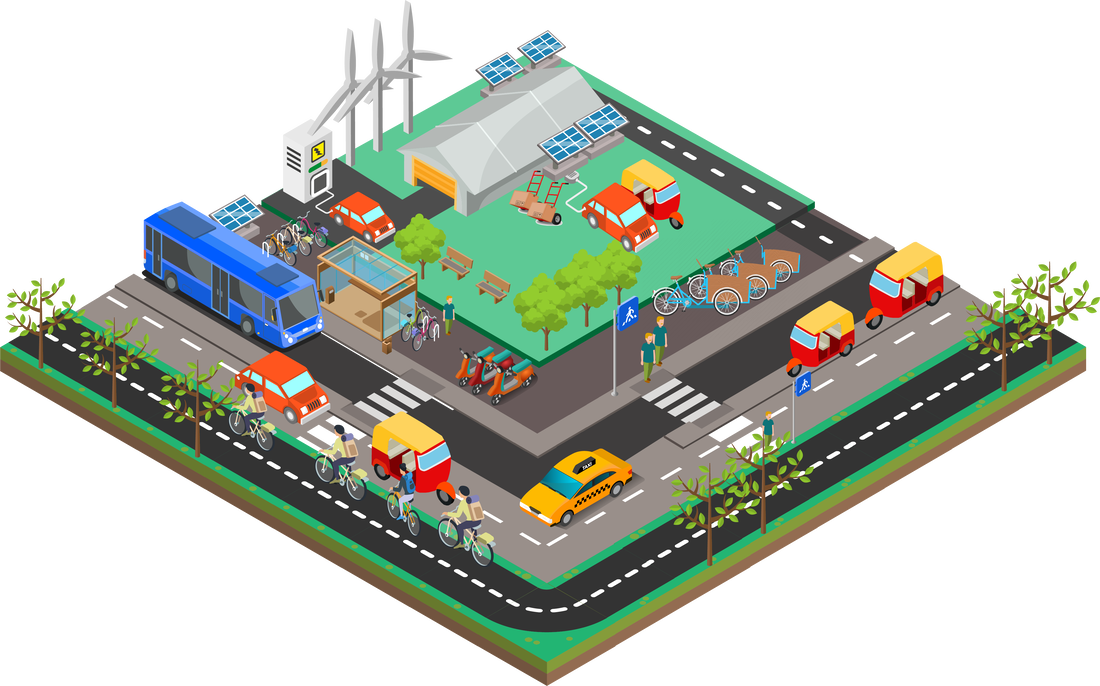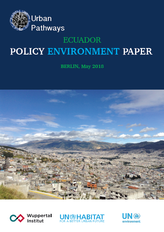Ecuador - Quito
The Urban Pathways Implementation Tracker is tracking the Projects Progress
|
Quito
Urban Pathways has been working with Quito, the capital and largest city of Ecuador, since 2018. City officials participated in a series of capacity building events including the Academy of Sustainable Urban Mobility (AoSUM) 2018 and 2019. Direct support has been provided in topics related to EcoDistricts and nature-based solutions (NBS). In the Cities Forum on Sustainable Urban Infrastructure, organised jointly by Urban Pathways, the Sustainable Intermediate Cities Program of GIZ Ecuador and the local authorities in January 2019 in Quito, city officials from 10 Latin American cities including UP pilot and replication cities (Belo Horizonte, Aguascalientes, Quito, Cuenca and Ibagué) were invited to share their experiences on mobility, energy and resources. Finally, in February 2019 a city representative participated in the e-mobility planning workshop, where the pilot project below was developed and is currently being implemented. Further cooperation possibilities related to the development of EcoZones in three neighbourhoods of Quito, as well as waste management activities have been identified. |





